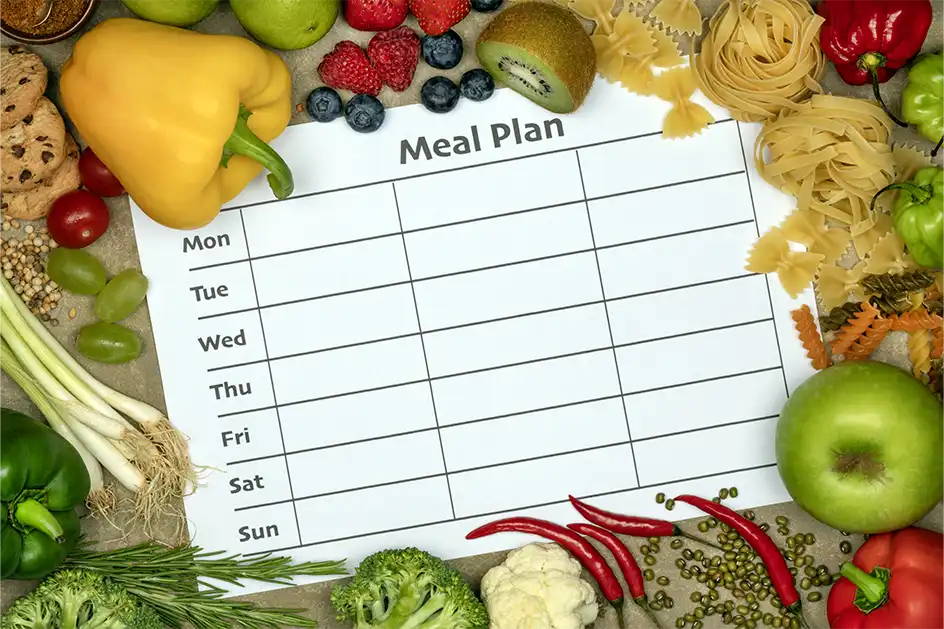High cholesterol is a major risk factor for heart disease, affecting millions of people worldwide. The good news is that adopting a diet low in saturated fats and high in fiber, combined with regular physical activity, can significantly help reduce bad cholesterol levels (LDL) and improve overall heart health. In this article, we’ll dive deep into how these lifestyle changes can lower cholesterol and keep your heart healthy for the long term.
Understanding High Cholesterol
Cholesterol is a fatty substance found in the blood. While your body needs a certain amount of cholesterol to build healthy cells, too much can lead to health problems. Cholesterol is divided into two types:
- Low-Density Lipoprotein (LDL): Often referred to as “bad cholesterol,” high levels of LDL can lead to plaque buildup in the arteries, increasing the risk of heart disease and stroke.
- High-Density Lipoprotein (HDL): Known as “good cholesterol,” HDL helps remove excess cholesterol from the bloodstream, reducing the risk of cardiovascular diseases.
High cholesterol is usually asymptomatic, meaning many people don’t realize they have it until they undergo a blood test. For those diagnosed with high cholesterol, diet and exercise are the first lines of defense before considering medication.
Benefits of a Low-Saturated Fat, High-Fiber Diet

Adopting a diet low in saturated fats and rich in fiber can have a profound impact on reducing high cholesterol levels. Here’s why:
1. Low-Saturated Fat Diet
Saturated fats are primarily found in animal products such as fatty cuts of meat, full-fat dairy, and processed foods. A diet high in saturated fats can elevate LDL (bad cholesterol) levels, leading to clogged arteries. By reducing your intake of these unhealthy fats, you can significantly decrease your LDL levels.
Tips for Reducing Saturated Fats:
- Choose Lean Protein Sources: Opt for lean meats like skinless chicken, turkey, and fish instead of fatty red meats. Fish, especially fatty varieties like salmon and mackerel, are high in omega-3 fatty acids, which can lower LDL cholesterol.
- Switch to Low-Fat Dairy: Choose low-fat or fat-free dairy options, such as skim milk, low-fat yogurt, and reduced-fat cheese.
- Avoid Processed Foods: Processed and fast foods often contain high levels of saturated fats. Opt for whole, unprocessed foods whenever possible.
- Use Healthy Oils: Replace butter and lard with heart-healthy oils like olive oil, avocado oil, or canola oil, which are rich in unsaturated fats.
2. High-Fiber Diet
Fiber, particularly soluble fiber, plays a crucial role in lowering cholesterol. Soluble fiber binds with cholesterol in the digestive system and helps remove it from the body before it enters the bloodstream. Foods high in soluble fiber have been shown to lower LDL levels and support digestive health.
Best High-Fiber Foods for Reducing Cholesterol:
- Oats: Rich in soluble fiber called beta-glucan, oats can lower LDL cholesterol when consumed regularly.
- Beans and Legumes: Foods like lentils, chickpeas, and black beans are high in fiber and protein, making them excellent meat substitutes.
- Fruits: Apples, oranges, pears, and berries are packed with soluble fiber, antioxidants, and vitamins that benefit heart health.
- Vegetables: Include plenty of fiber-rich vegetables like broccoli, Brussels sprouts, and carrots in your meals.
- Nuts and Seeds: Almonds, chia seeds, and flaxseeds are great sources of fiber, healthy fats, and nutrients that support heart health.
Incorporating more fiber into your diet not only reduces bad cholesterol but also keeps you feeling fuller for longer, which can aid in weight management.
How Regular Exercise Lowers High Cholesterol

Regular physical activity is essential for maintaining healthy cholesterol levels. Exercise helps raise HDL (good cholesterol) and lower LDL (bad cholesterol), reducing the risk of heart disease. It also supports weight loss, reduces inflammation, and improves overall cardiovascular fitness.
1. Aerobic Exercise
Aerobic exercises like brisk walking, running, cycling, and swimming are excellent for improving heart health and lowering high cholesterol. These exercises get your heart pumping and increase blood circulation, which can help eliminate excess cholesterol from the body.
Recommended Aerobic Activities:
- Walking: A 30-minute brisk walk most days of the week can significantly improve cholesterol levels.
- Jogging or Running: If you enjoy higher intensity, try jogging or running for 20-30 minutes three to four times a week.
- Cycling: Biking, whether indoors or outdoors, is a low-impact way to boost your heart health.
- Swimming: Swimming works the entire body and is an excellent cardio workout that reduces stress on the joints.
2. Resistance Training
Strength training, such as weight lifting or bodyweight exercises, can help increase muscle mass and metabolism, which supports heart health and reduces cholesterol. Incorporating strength training two to three times a week can lead to better overall cardiovascular fitness.
Effective Resistance Training Exercises:
- Bodyweight Squats: Target your lower body and boost metabolism.
- Push-ups: Strengthen your upper body and core.
- Resistance Band Rows: Improve posture and strengthen back muscles.
- Lunges: Work on balance and strengthen your legs.
3. Flexibility and Balance Exercises
Flexibility exercises like yoga and stretching don’t directly impact cholesterol levels, but they can reduce stress and promote a healthy lifestyle. Lowering stress can have a positive effect on heart health, and yoga, in particular, can improve circulation and support overall well-being.
Sample Weekly Plan to Reduce High Cholesterol

Here’s a sample plan that combines a low-saturated fat, high-fiber diet with an exercise routine to help lower high cholesterol:
Day 1 – Monday
- Breakfast: Overnight oats with almond milk, chia seeds, and sliced strawberries.
- Lunch: Spinach and lentil salad with diced tomatoes, cucumbers, and a light vinaigrette.
- Snack: Apple slices with a handful of almonds.
- Dinner: Grilled salmon with a side of steamed broccoli and quinoa.
- Exercise: 30-minute brisk walk and 15 minutes of bodyweight exercises (squats, lunges, push-ups).
Day 2 – Tuesday
- Breakfast: Smoothie with low-fat yogurt, banana, blueberries, and a tablespoon of ground flaxseeds.
- Lunch: Whole grain wrap with hummus, grilled chicken, and mixed veggies.
- Snack: Baby carrots with a side of guacamole.
- Dinner: Baked chicken breast with roasted Brussels sprouts and sweet potato.
- Exercise: 20-minute jog and 20 minutes of yoga or stretching.
Day 3 – Wednesday
- Breakfast: Whole grain toast with avocado and a poached egg.
- Lunch: Black bean and vegetable soup with a side salad.
- Snack: A pear with a few walnuts.
- Dinner: Spaghetti with whole wheat pasta, tomato sauce, and a side of green beans.
- Exercise: 30-minute cycling and 10 minutes of core exercises (plank, Russian twists).
Day 4 – Thursday
- Breakfast: Greek yogurt with honey, mixed berries, and a sprinkle of oats.
- Lunch: Quinoa salad with chickpeas, cherry tomatoes, cucumbers, and feta cheese.
- Snack: A small orange and a handful of mixed nuts.
- Dinner: Stir-fried tofu with mixed bell peppers, mushrooms, and brown rice.
- Exercise: 40-minute swim or 30 minutes of dancing.
Day 5 – Friday
- Breakfast: Porridge made with low-fat milk, topped with sliced banana and cinnamon.
- Lunch: Whole wheat pita stuffed with roasted turkey, lettuce, and tomato.
- Snack: Celery sticks with a tablespoon of natural peanut butter.
- Dinner: Baked cod with a side of spinach and wild rice.
- Exercise: 25-minute HIIT workout and 15 minutes of stretching.
Combining a low-saturated fat, high-fiber diet with regular exercise is a powerful strategy to reduce high cholesterol and improve heart health. A focus on whole, unprocessed foods, lean proteins, and regular physical activity can significantly lower bad cholesterol levels (LDL) and increase good cholesterol (HDL). Making these lifestyle changes can have a long-lasting impact on your overall health, helping you feel better and reducing the risk of heart disease.
Remember, it’s never too late to make positive changes to your diet and exercise habits. Even small adjustments can lead to big improvements in your cholesterol levels and heart health.




